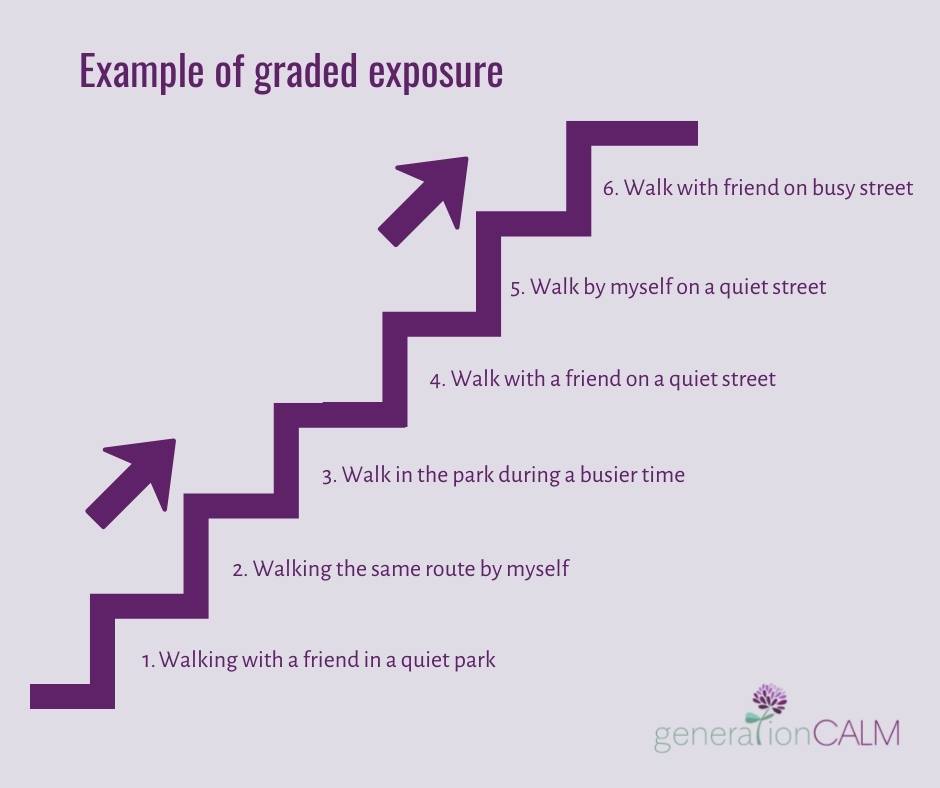When Walking Causes Anxiety: Could Walking Be The Cure For Social Anxiety
Walking is good for your mental health. But what if you have social anxiety disorder?
It is often assumed that social anxiety only affects people within ‘social’ settings. But it’s not true. Things like driving and walking can be difficult. It’s about the fear of judgement, ridicule or being the center of attention, rather than not wanting to be around other people. In fact, being within a group may be a perfect hiding spot for someone with social anxiety.
How does social anxiety affect your walking?
When on vacation I love an evening stroll before and after dinner. But for someone with social anxiety, walking in front of other diners might be terrifying. They may try to avoid it altogether or at least walk in the middle of a group of people to avoid being too visible.
Someone with social anxiety may also worry about walking alone. Not so much for safety reasons, but because they fear doing something embarrassing. Or they fear being judged about their appearance or the way they walk.
Recall the last time you paid attention to how you walk. Did it make you walk funny? Was it weird to focus on something you do automatically? That’s how it feels when you have social anxiety about walking in front of other people. Because they are focused on how they look in front of others, it feels weird, which makes them think they must be walking weird and how humiliating that is. It’s a catch 22.

What is social anxiety?
Social anxiety is very common with about 4% of the world population being affected by it at some point in their lives. The person with social anxiety is preoccupied with giving a favorable impression of themselves to others. Because their negative thoughts center around the possible failure of making a good impression, such as showing physical signs of nervousness, they often avoid social situations to reduce the chance of public humiliation.
The physical symptoms of social anxiety (ICD-10) may include, among others, blushing, hand tremors, sweaty palms, nausea, or urgency to pee and the symptoms may progress to a panic attack. These symptoms are often exactly what a person with social anxiety want to avoid showing other people. And so they engage in behaviors they believe will help keep them safe, such as wearing a polo neck to cover up a nervous flushing of the skin.
The social phobia may start with one situation, such as public speaking or eating in public, but it can soon extend into more general situations too, which can make life very limited.
Why you should try walking
If you avoid walking because you are fearful of others looking at you, this will not help you overcome your social anxiety. Avoidance strengthens your fear. Instead, if you can gradually practice walking in the least scary environment moving up to a more nerve-wracking walking environment, your confidence will grow.
This graded exposure exercise is part of cognitive behavioral therapy (CBT), the gold standard when it comes to treating anxiety.
CBT is about your thoughts, feelings and behaviors and how they interact to maintain a fear. It involves shifting your focus from you and what you are afraid of, to actively noticing your thoughts, challenging them and facing your fear after learning relaxation techniques.
In addition, there is lots of evidence to suggest walking is good for reducing anxiety. From the physical exercise itself to being outdoors in nature. So the act of walking outdoors will not only help you confront your fears, being in a natural environment will work towards calming your anxiety.
How to overcome social anxiety by walking in public
- First, decide why you want to overcome your social anxiety. Why will walking improve your life? Are you wanting to walk to improve your physical fitness, your mental health or do you want to achieve another great goal? Perhaps you want a dream job which will involve being confident in front of other people. Or you want to take your kids out to the park. Figure out your motivation.
- Identify and create a list of the negative phrases you tell yourself about walking in public. For example, ‘I always make a fool of myself’. Or, “I’m not dressed appropriately to fit in’.
- Notice when you are most likely to engage in overthinking either before, during or after the walk is over. Catch yourself when you’re having these negative thoughts. Even better, write them down.
- Challenge anxious thoughts by asking yourself several questions: What evidence do I have for this thought, or evidence contrary to my thought? Am I looking from lots of viewpoints? If I look at the situation positively, how is it different? Will this matter a year or five years from now?
- Learn to shift focus from your feelings about walking in front of others to focusing on the act of walking mindfully.
- Know that other people are much more involved in their own lives to notice how you are walking or how you look. If you fall, most people will come to your aid rather than mock you. We overestimate how much other people notice us, known as the spotlight effect.
- Understand that even with practice, you may still experience some anxiety symptoms such as blushing, sweating or shaking, but that they will go away. In fact, exercise, such as walking, will help your nervous energy disappear more quickly.
- Create a numbered list of walks you might normally avoid, starting out easy and step by step gradually create more difficult situations. Until you end with the most challenging walking scenario.
- Regularly practice breathing techniques, progressive muscle relaxation and/or meditation to reduce your muscle tension, and other anxiety symptoms.
- Start walking and move through the graded exposure list of walks you created in step 7. Start on level one, and repeat that walk daily until it gets boring, then move onto the walk from step two. Repeat. Treat it as a challenge.
The basic premise of this treatment plan is to start walking so that you get out of your comfort zone, in a way that you are more in control of at the beginning. For some people that might mean walking with a friend in a quiet park. Then gradually move up to walking in a more challenging scenario, which might be walking alone on a crowed high street.

What to do before a walk
The first step out of the door will probably be the hardest. Anticipatory anxiety is real, especially when you overthink what terrible things could happen to you. You’ll imagine how busy it will be. You might even see in your mind’s eye what route you’ll take and all the potential embarrassing moments.
- One simple way to overcome this frozen state is to simply say ‘ACTION’ to yourself, in your head or out loud. It’s a powerful word that can unstick your mind from the normal overthinking pattern.
- Have a game plan so you know where you are going, what you need to take with you and a plan for if you get panicked.
- Remind yourself of the bigger picture. What is your big motivation for getting outside and walking?
What to do during a walk
If you are walking and are overcome with an anxious feeling, there are a few things you can try.
- Slow down and try a mindfulness technique called the 54321 method. This activity requires focus which replaces your intrusive thoughts.
- Start by finding 5 things in your environment that you can see.
- Identify 4 things you can hear
- Find 3 things you can feel (you don’t have to pick up an object it could be wiggling your toes, or fiddling with a piece of jewellery).
- 2 things you can smell.
- 1 thing you can taste.
- Look for something in your environment that is not moving (harder than you think).
- Keep your posture in check with your shoulders down and back. This has two purposes. One, your breathing will be better, which will lead to reduced anxiety. And secondly, it will help you to feel taller and more confident.
- Practice slowing down your breath so that you exhale is longer than your inhale.
What to do after a walk
You may find yourself in postmortem overthinking, taking apart what you just did and re-experiencing embarrassing moments from your walk. So here are some tips which may help. But know that this is normal and will fade over time.
- Keep yourself busy after your walk. You might want to listen to a podcast, watch TV, or chat to a friend.
- Celebrate!! You just did something you normally avoid. That’s fantastic. Yes, you might be tempted to criticize yourself, but remember, you don’t need to be perfect.
- Facing your fears can be draining, mentally and physically. So prepare some downtime to recover. Self-care might look different depending on your personality type, from taking a bath, eating a good meal to reading a book.
When it’s time to seek help for social anxiety
If the idea of walking in public is too difficult to contemplate, it might be time to consider contacting a therapist. Many offer online therapy services so you don’t have to physically go for an office visit. You’ll know it’s time to start therapy when your fear is making your world feel smaller and smaller.
Talking about your fears with a trusted person will help ease the pain they cause. A therapist will help you through the process in a kind and empathetic way.
Conclusion
It can feel uncomfortable leaving the house and even more so if you know there will be other people around. But taking walks in nature is good for your mental health and so tackling your social anxiety through walking is a great way to face your fear.
Further reading:
How To Be Yourself by Ellen Hendriksen (about social anxiety)
The War of Art by Steven Pressfield (about resistance to doing the work)
If you like this blog post, you’ll enjoy being part of my fortnightly newsletter. You can sign up to the right, to the right ➡➡

